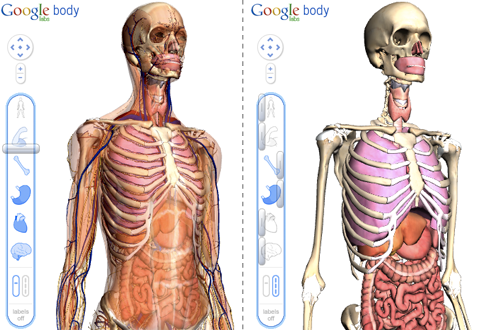Google Body Browser for Human Anatomy
The Body Browser is a plugin-free web-based application by Google that allows a detailed and complex three-dimensional exploration of the human body.
It leverages Web-based Graphics Library (WebGL) technology and HTML5, and unlike other similar apps, the Body Browser doesn't require Flash, Java or other graphical plugins to run. WebGL is a cross-platform 3D graphics API designed to render interactive 3D animations in realtime within web browsers that supports HTML5 Canvas element without any use of plugins.
To date, WebGL is implemented in the latest Google Chrome, Firefox 4 beta and development releases Safari (WebKit nightly builds). The Body Browser requires any one of these web browsers to work.

The application displays a layered model of the human anatomy that can be rotated and zoomed in on. Using the simple sliding navigation akin to that of Google Maps, users can peel through the many tiers of skin, muscular, skeletal, internal organs, and nervous system. Users can also examine the different body parts with keyword search or affixed labels, and can also share the exact anatomical location by copying and pasting the corresponding URL.
The Body Browser was introduced in December 2010, and it is in experimental phases in Google Labs. The current working model is of a woman's anatomical system and the male model is still in progress.


